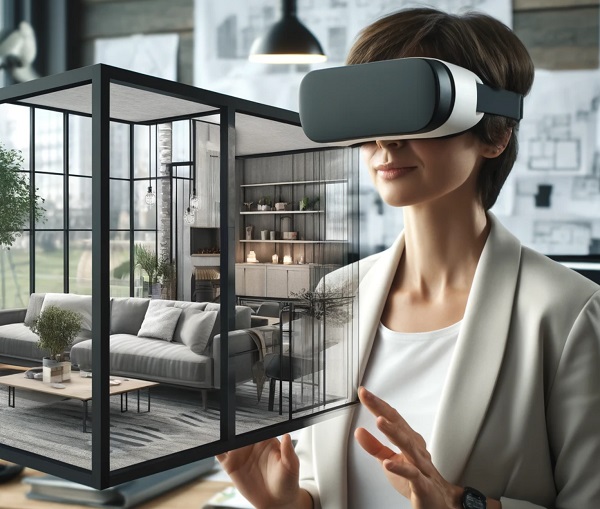In the rapidly evolving world of interior design, the integration of virtual reality (VR) is not just a futuristic concept—it’s a practical revolution transforming how designers conceptualise, create, and refine spaces. From immersive walkthroughs that allow both designers and clients to experience a room before a single piece of furniture is placed, to precise simulations that can anticipate structural challenges, VR technology is redefining the boundaries of interior design. This article explores the pioneering shift towards using VR in interior design, examining its profound impact on visualisation, client communication, and project management. Whether you are a seasoned designer or a curious homeowner, understanding the potential of VR will open up a world of possibilities for building interiors that are not only beautiful but also precisely aligned with envisioned outcomes.
The Evolution of Interior Design with Technology
Interior design has travelled a long path from hand-drawn sketches to sophisticated computer-aided design (CAD) applications. Before VR, designers relied heavily on 2D and 3D modelling tools, which transformed the speed and efficiency of creating design drafts. The introduction of VR into the design process marks the latest advancement, allowing for a more immersive and interactive design experience that promises to further transform the industry.
How VR Transforms Interior Design
Immersive Visualisation
VR technology allows designers and clients to experience virtual spaces in a way that traditional models cannot match. By donning a VR headset, users can walk through and interact with a space as if it were real. This level of immersion helps clients better understand and visualise the proposed designs, reducing miscommunications and ensuring that client expectations are met.
Enhanced Collaboration
Design projects often involve a myriad of stakeholders, from architects and designers to clients and contractors. VR facilitates a collaborative environment where all parties can meet in a virtual space to review and modify designs in real-time. Tools such as VR meeting rooms enhance decision-making processes and help keep projects on track.
Error Reduction and Precision
One of the most significant advantages of using VR in interior design is its ability to identify design issues before construction begins. This accuracy not only saves time but also significantly reduces the costs associated with design errors. Various case studies have shown how VR has caught potential problems early in the design process, allowing for adjustments before physical work commences.
Tools and Software for VR Interior Design
The market offers a variety of VR software tailored for interior design. Tools like SketchUp VR, Autodesk Revit Live, and Enscape provide robust platforms for creating and experiencing designs in VR. When selecting a VR tool, designers should consider the specific needs of their project, including compatibility with existing software, ease of use, and the level of interactivity required.

Real-World Applications and Case Studies
Residential Design
A residential project utilising VR can provide insightful case studies. Clients who experience their home designs in VR are typically more satisfied with the final results, as the technology ensures their vision has been fully understood and realised.
Commercial Design
In commercial spaces such as restaurants or offices, VR helps stakeholders visualise complex elements like lighting, spatial dynamics, and overall aesthetics. One notable example involved a restaurant owner who used VR to experiment with different themes and layouts, which maximised customer seating without compromising the dining experience.
Educational Use
Educational institutions are increasingly incorporating VR into their curricula to provide students with a hands-on experience of modern design technologies. This practice prepares future designers to meet the industry’s evolving demands and embrace new technologies efficiently.
The Future of VR in Interior Design
As technology advances, we can expect VR to become even more integrated into interior design practices. Emerging trends include the use of augmented reality (AR) to overlay virtual elements onto physical spaces in real-time, providing an even more integrated approach to design. However, challenges such as high costs and the technological learning curve may slow down widespread adoption.
VR represents a transformative development in the field of interior design, offering unparalleled immersion, collaboration, and efficiency. As the technology continues to evolve, it will undoubtedly open new avenues for creativity and innovation in design processes.
Have you experienced VR in interior design? Share your experiences or thoughts in the comments below. For those interested in exploring VR options in your next design project, consider reaching out to a professional VR design firm to see how this technology can enhance your design approach.
